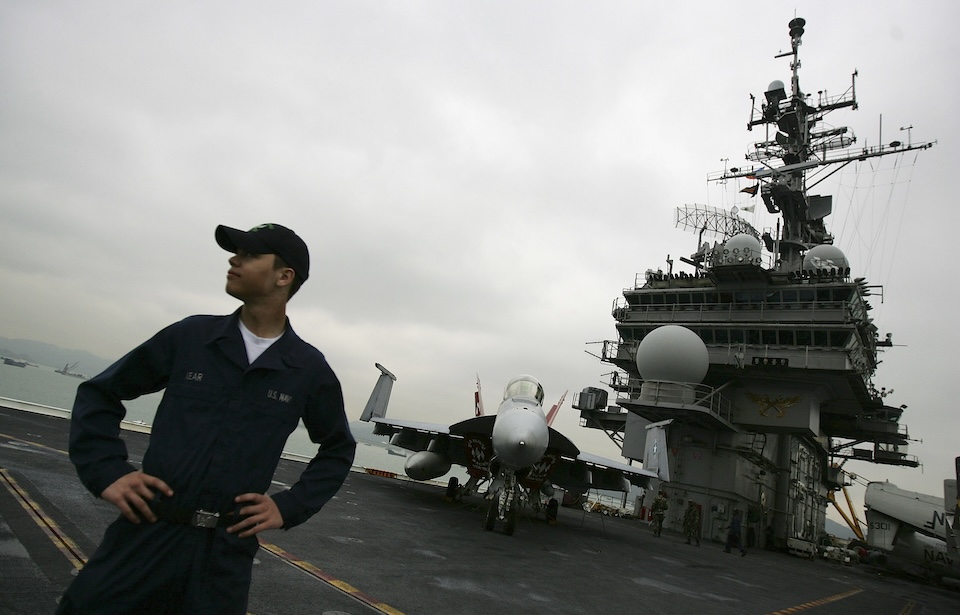In May 2022, the legendary USS Kitty Hawk (CV-63) arrived in Brownsville, Texas, marking the end of an extraordinary naval career. Commissioned in 1961, the carrier served the U.S. Navy for nearly half a century, participating in critical missions around the world and standing as a powerful emblem of American maritime strength. Constructed at a cost of $264 million—equivalent to about $2.5 billion today—the Kitty Hawk embodied the height of Cold War innovation and naval engineering.
After decades of service, however, the Navy sold the ship in 2021 for a single cent to a scrapping company—a decision that deeply disappointed veterans and naval enthusiasts who had long advocated for its preservation as a museum ship. Though her steel may be gone, the Kitty Hawk’s spirit endures as a proud symbol of duty, power, and the generations of sailors who called her home.
Captivating military personnel and civilians alike
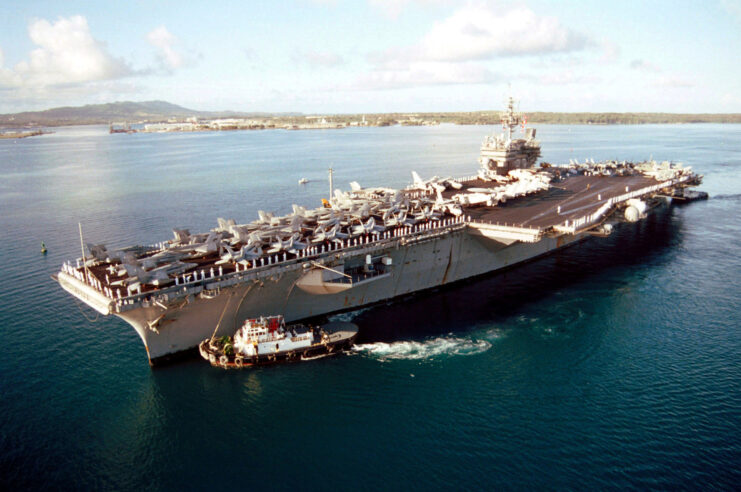
The USS Kitty Hawk, the first of the Kitty Hawk-class aircraft carriers, was built by the New York Ship Building Corporation, with construction starting in December 1956. She was launched in May 1960 and officially commissioned into the U.S. Navy in 1961. Shortly after entering service, the Kitty Hawk embarked on a range of initial missions, including port calls in South America and patrols near Japan, kicking off a lengthy and eventful naval career.
Service during the Vietnam War
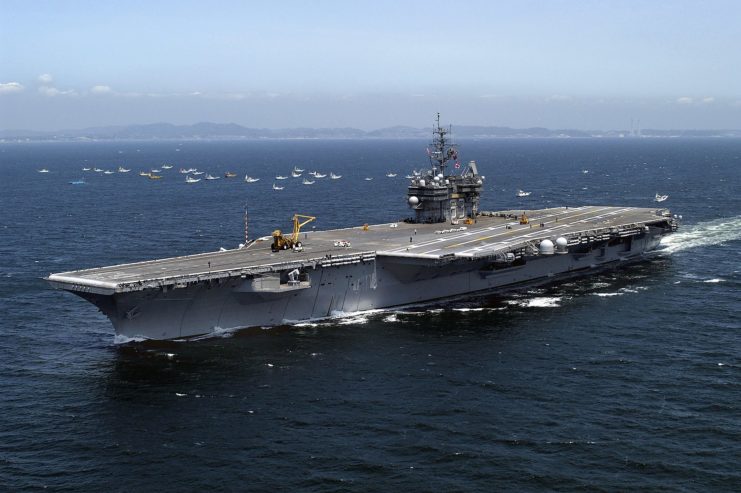
During the Vietnam War, the USS Kitty Hawk served in Southeast Asia and was later upgraded to improve her performance as a multi-role aircraft carrier. In the 1970s, she operated throughout the Western Pacific, contributing to humanitarian missions like rescuing Vietnamese refugees and providing support after the assassination of South Korean President Park Chung-hee. She also deployed to the Arabian Sea during the Iran Hostage Crisis.
For the rest of her career, Kitty Hawk remained active in military operations across the Middle East and the Pacific.
Weapons equipped by the USS Kitty Hawk (CV-63)
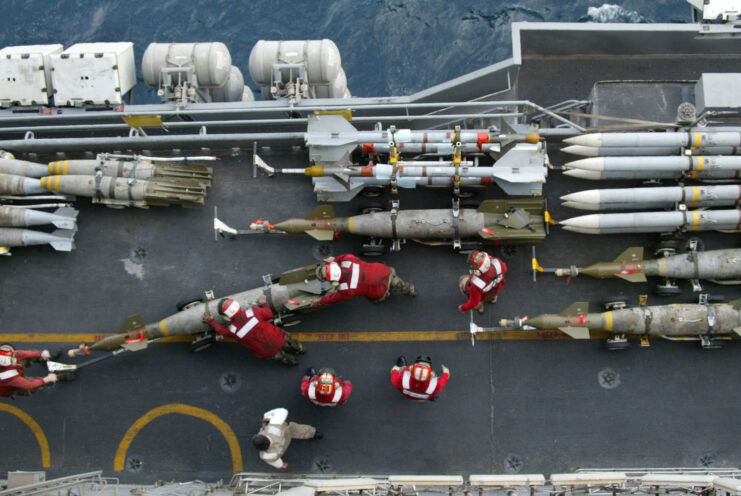
Beyond her combat prowess, the Kitty Hawk hosted several notable guests, including U.S. President John F. Kennedy, Nancy Sinatra, and author John Steinbeck. She also made a memorable appearance in Hollywood, serving as the backdrop for Disney’s 1966 film Lt. Robin Crusoe, U.S.N.
In a historic achievement, the Kitty Hawk became the first aircraft carrier to receive the Presidential Unit Citation in December 1967, in recognition of her outstanding service during the Vietnam War, especially her role in the Tet Offensive.
Sold down the river
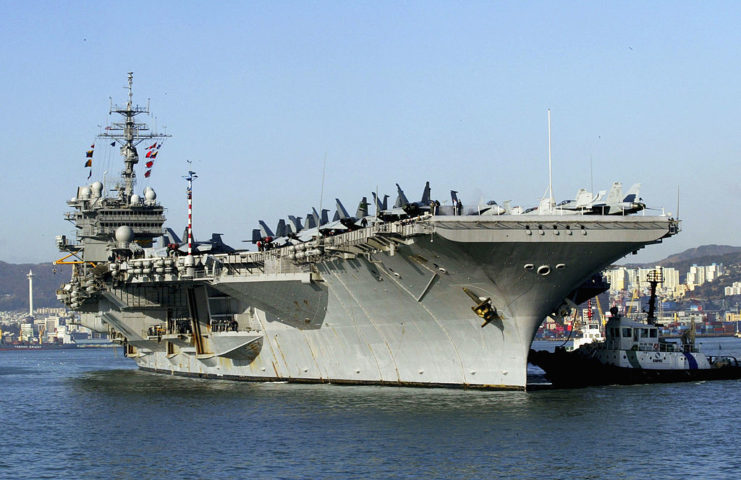
In 2005, the U.S. Navy revealed that the USS George Washington (CVN-73), a nuclear-powered aircraft carrier, would replace the USS Kitty Hawk at United States Fleet Activities Yokosuka in Japan.
The decommissioning process for the Kitty Hawk began in 2008, with the ship officially retired in 2019 in Bremerton, Washington. On the day of its retirement, over 2,000 people gathered in the ship’s hangar bay to participate in a ceremony that honored the long and storied legacy of the Navy’s oldest active warship at the time.
Veterans tried to save her
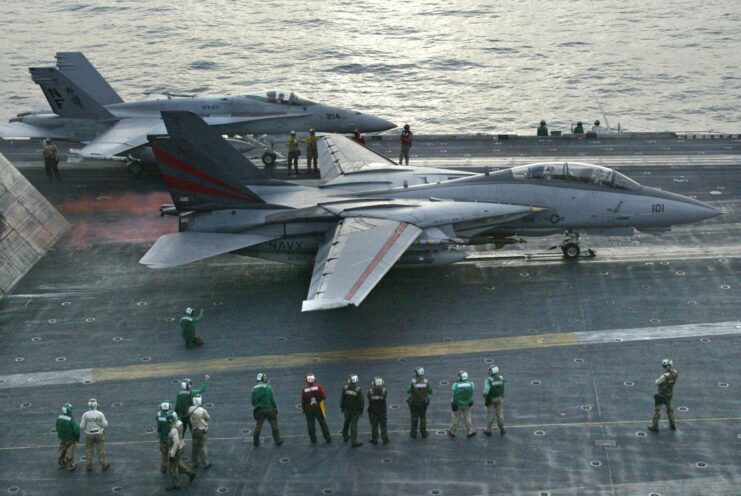
As uncertainty surrounded the fate of the USS Kitty Hawk, the USS Kitty Hawk Veterans Association spearheaded a determined campaign to preserve the historic carrier as a floating museum. Their efforts raised an impressive $5 million, reflecting the deep affection and pride many still felt for the ship. However, despite their persistence, the Navy rejected the proposal, instead deciding to send the vessel to the scrapyard. In October 2021, the Navy sold both the Kitty Hawk and the USS John F. Kennedy (CV-67) to International Shipbreaking Limited— for the symbolic price of one cent each.
By May 2022, the Kitty Hawk had reached Brownsville, Texas, where dismantling began. The process, projected to take between five and ten years and cost roughly $750 million, signaled a somber conclusion to one of the U.S. Navy’s most storied and enduring carriers.
